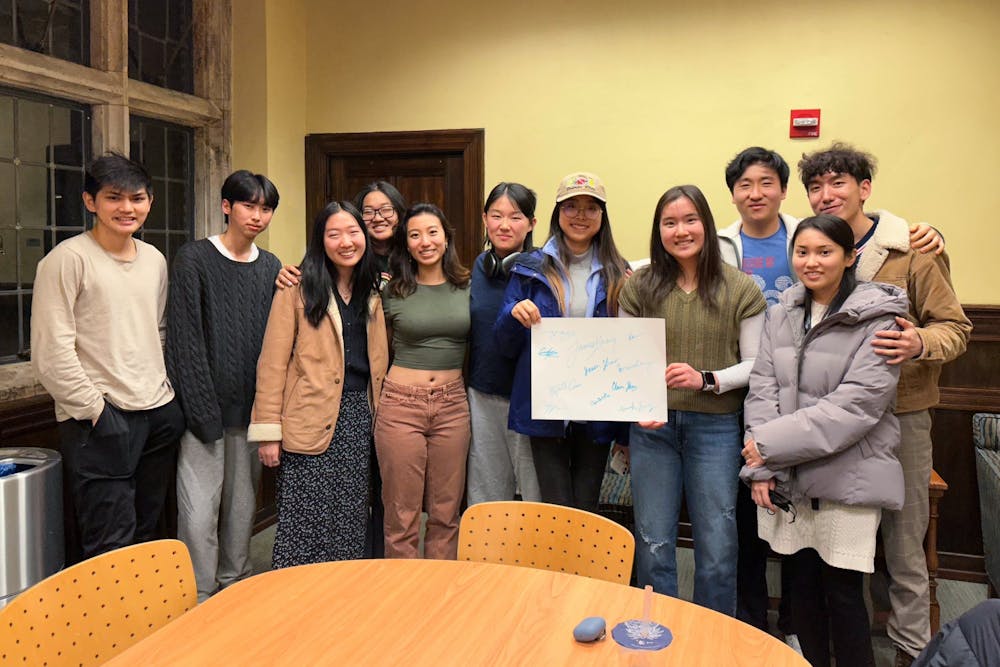"Hawthorn," a new student-run Asian American publication, will launch its first article in early April.
Hawthorn — the first Asian American publication on Penn’s campus in nearly 20 years — will highlight Asian American Pacific Islander art, history, and culture. According to the publication's leaders, it will aim to spread awareness about Asian identity both on campus and in the larger Philadelphia community.
The magazine is a recent initiative by Rice Up, a student organization at Penn dedicated to empowering Asian American voices and advocating for better representation in media and politics. The current Co-Presidents of Rice Up — College first years Jason Zhao and James Huang — founded the publication.
Zhao said that the last time Penn had a similar publication was in 2005, when a magazine called "Propaganda Silk" was created to highlight Asian American literature.
“It’s been nearly 20 years since we had an Asian American publication, even though the Asian American community has been expanding rapidly with every year,” Zhao said. “Penn needs its own Asian American voice to speak up about our unique perspective on Penn issues, especially as our community suffers violence and brutality throughout the country.”
According to the publication's leaders, the topics covered are intentionally diverse, reflecting Hawthorn’s desire to provide breadth and depth of perspective on the AAPI experience. Articles will range from information on fashion, music, and food to discussions on Asian hate in America, the Chinatown 76ers arena protests, and interviews with politicians. Asian creators, such as musicians, writers, artists, and chefs — at Penn and in the broader Philadelphia community — will also be spotlighted.
Huang expressed a desire to involve more college students in activism by emphasizing the experiences of the Asian American students.
“Traditional news and media outlets don’t often spotlight an Asian American perspective,” Huang said. “So in creating Hawthorn, we want people, especially young people, to realize that when we better appreciate the perspectives of Asian-American communities, we can fight the ignorance that lays at the root of discrimination and stereotypes against us.”
RELATED:
Penn students celebrate Lunar New Year amid calls for more University recognition
Director of PAACH suddenly leaves Penn after 10 years in position
Logistics director for "Hawthorn" and College first year Eyana Lao said that the publication intends to broaden discussions among Asian Americans to encompass international students like herself, adding that she has gone to some speaker events at Penn and struggled to relate to some topics .
"Being Asian is very nuanced, and so at Hawthorn, we’re encouraging writers to talk about the Asian diaspora and how your Asian identity can vary based on your community, resources, etc,” she said.
According to the publication's leaders, one of Hawthorn’s goals is to highlight Philadelphia as a home and voice for Asian Americans. The magazine has spread into neighboring schools in the area.
Drexel first year Chris Nu joined the magazine after seeing it on Instagram. He said he decided to join Hawthorn when he realized that his university did not have a similar group on campus and to expand on his work in high school as a founder of an Asian advocacy club.
“As a recent activist, through Hawthorn, I want to send out the message that Asian identity matters, that we aren’t second-class citizens, and that Asians shouldn’t be grouped into one big category. It’s all about educating misconceptions,” Nu said.
Hawthorn's leaders said they hope to partner with other underrepresented student organizations on campus to foster a better sense of community across identities. For example, the group is planning to host an event at a local restaurant in partnership with music groups on campus to raise money for Asian American education in Philadelphia.
Zhao and Huang said that the name of the magazine represents what it is meant to embody, as Hawthorn is the name of a sweet and sour fruit found in Asian countries.
“To us, [Hawthorn] perfectly symbolized the power of our magazine as representing both the positive and negative experiences that come with Asian identity, as well as the huge amount of diversity within this identity,” Zhao said.
The leaders said that their main goal of the magazine is to increase activism by encouraging students to express themselves and listen to others.
“The most important thing in activism is to listen and express how you help others, yourself, and your community, and that’s what we’re trying to show through Hawthorn,” Huang said.









